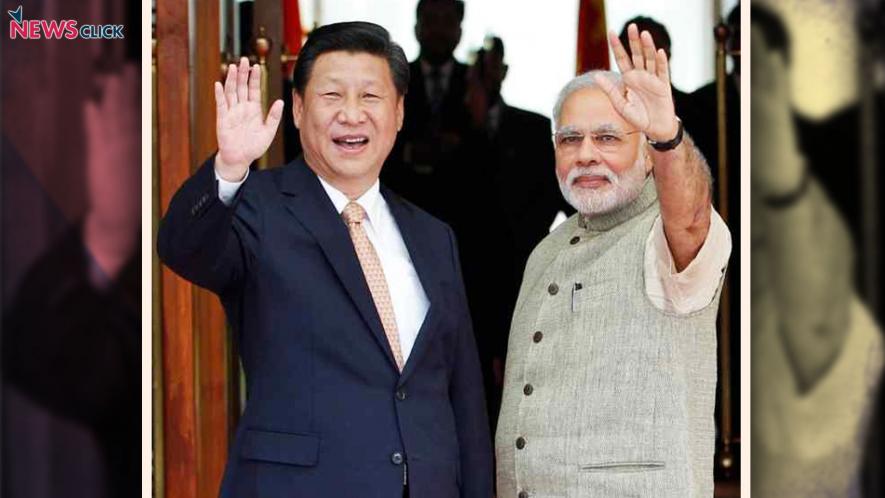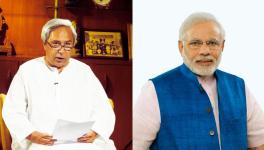Where is India’s Strategic and Foreign Policy Headed?

Anything that opens up the space for pursuit of rapprochement between India and China and settlement of outstanding issues is to be welcomed. In that sense, ‘informal summit’ served its purpose by bringing the temperature down. However, unless opening of such space is premised on “neighbourhood first” policy—that regards as an axiomatic truth that peaceful and stable relations in the neighbourhood are intrinsic for Indian people’s welfare and wellbeing—the likelihood of transforming the relations between the two stands little chance. The flip-flop we have witnessed in India’s China policy, does not inspire confidence because BJP government’s posture of being “tough” on foreign policy was not guided by any consistent strategic thinking. So, India went into upping the ante with China until it dawned on the policymakers that this comes with a price. For instance, is it possible for India to sustain a two-front war approach, and an arms race with China (and Pakistan), when China’s economy is five times India’s and they spend three times more on military than India? Soviet Union was trapped into a ruinous arms race by Ronald Reagan administration. It can ruin India too.
BJP-led government’s rush to bring down the temperature in relations with China was propelled by two factors: economic tight squeeze due to faulty policies of the Narendra Modi government, combined with volatility in foreign trade. Rising oil and gas prices, especially, have restricted availability of resources to spend, as general elections loom next year. And the cost of preparing for a two-front war is much too high. The informal summit ended with separate communiqués by the two governments. While New Delhi talked about each other’s “sensitivities, concerns and aspirations”, Beijing only mentioned “concerns and aspirations”andspoke of “difficulties” in bilateral relations and expressed willingness to ‘deepen, understand, enhance mutual trust, properly handle differences and incessantly accumulate positive energy for healthy and stable development of military ties’. Indian foreign secretary, more or less, reciprocated the rhetoric India spoke of – improved relations between the two being essential to “create the condition for the Asian century”. Whereas, China spoke of this as contributing “for the stability of the world”. The two positives to come out of the summit were: commitment of the leaders to meet more often and build trust between the leadership as well as enhance communication between the two militaries to avert escalation of tension between the two armies. In Doklam, the 73-day face off could have ended in a bloody fight. It is remarkable that last time the two countries exchanged fire was way back in 1967, at Nathu La. So, there is virtue in keeping it that way and avoiding “face offs” and incendiary rhetoric.
However, the lack of movement on border talks in last 15 years – despite 20 rounds of talks between the two Special Representatives – clearly shows that the two countries have to go a long way before they can seriously consider a settlement. Meanwhile, China has offered economic cooperation to India in three countries including Afghanistan. On the other hand, China proposed joint development of Nepal railway network by India and China, to which, India responded with lukewarm interest, and is pursuing its own bilateral railway project with Nepal. The lurking doubt is that India is using this lowering of tension temporarily until the general elections, while military preparedness and forging alliances with the US continues.
Shadow cast by the US
Around this time, US Defence Secretary Jim Mattis told members of Senate Armed Services Committee, during a hearing, “(P)robably most importantly, as we look overall at this region, I’d look at India, the largest democracy on the planet and one where we probably have ‘once-in-a-generation’ opportunity to find more common ground.” The US was also slapping India around by putting it on the US Intellectual Property Watch List under Section 301 of the US Trade Regulation (1974), along with 12 other countries. These are Algeria, Argentina, Canada, Chile, China, Colombia, Indonesia, Kuwait, Russia, Ukraine and Venezuela. The USTR has claimed that “Indian administration of intellectual property process also raise new issues that have negatively affected US (IP) right holders over the past year (last 12 months).” It has also imposed custom duty on the steel prices, which affects Indian steelmakers.
Given India’s susceptibility to the US’s carrot and stick approach, it should leave no one in any doubt that what US wants, is for India to align its laws and policies with the US, and play a regional force multiplier role for US’s global designs. Former Secretary of State Rex Tillerson pushed the term ‘Indo-Pacific’ (straddling West coast of US to Africa), where India can play an unspecified “key role in stabilizing the region as well as play a role in Afghanistan”. Such flattery melts the hearts of India’s ruling classes, who see US as their role model and saviour. (Just a reminder that 23,000 dollar millionaires in India have quit India and settled abroad, so commitment of rich Indian to India raises questions). So, when the US invoked ‘Countering America’s Adversaries Through Sanctions Act’ – warning countries not to trade with Russia – there were fears in some US quarters that such sanctions against India could prove counter-productive. It may create problems in India’s purchase of S 400 air defence missiles from Russia, but might equally make it difficult for the BJP government to take India into the US orbit. Therefore, several pro-India lobbyists advocated ‘exempting’ India from the effects of CAATSA because India is gradually reducing its dependence on Russia, which has declined from 80 per cent to 62 per cent. It is further going down sharply now that the Indian Army has decided not to buy any ammunition and spares for “vintage” Russian weapons, and instead turn to US for the same. Therefore, recently (April 27) the Defence Acquisition Committee cleared procurement of thirteen 127 mm caliber guns for the Navy and NAG missiles for the Army from the US-based BAE (which also supplies 145 mm artillery guns to the Indian army) at a cost of Rs 3,600 cr ($550 mn). In February last year, ministry of defence had cleared procurement of 16,000 cr ($2.5 bn) worth of 740,000 rifles, 5719 sniper rifles and light machine guns. Moreover, a so called exemption being a merely ad hoc arrangement might appear conciliatory, but makes it abundantly evident that it is the US, which calls the shots.
Now US’s propensity for taking unilateral actions to arm-twist countries to give into its demands is fairly well-known. Therefore, US, by going against the settled dispute settlement mechanism under WTO – which mandates that S 301 of USTR can only be invoked provided they are based on “rulings and recommendations” of the DSP of WTO as decided in 2000 – shows scant regard for established multilateral agreements. Notwithstanding all this, some Indian corporate opinion makers write that India should “pragmatically evaluate the benefits and costs of placating China” and claim that “similar efforts” by Japan and US have not “paid off”. He then goes on to argue that “lofty disregard of global rivalries is unaffordable when an aspiring hegemon (read China) can so easily pick off your neighbor one by one”, so turn to form alliance with ‘democracies in Asia and beyond (read US and its allies)”. [Mihir Shah, “Asia’s balance of power has become fairly lopsided”, Live Mint (Bloomberg View) April 27, 2018.] Trouble with such reasoning is that it is brazenly craven and passes what is in US’s interest to be good for India. Without going into the exploitative relations foisted by Japan and the US on country after country – and especially, latter’s penchant for military aggression – to argue for an alliance with the US to contain China and in the process, embitter relations with a neighbor would not only require massive diversion of scarce resources into wasteful acquisition of weapons, but would inevitably reduce social spending and investment in people. A military alliance with the US is not going to make India an equal partner with the US. It will rather make India a supplicant. This would fatally destroy India’s independent foreign policy and strategic autonomy.
Get the latest reports & analysis with people's perspective on Protests, movements & deep analytical videos, discussions of the current affairs in your Telegram app. Subscribe to NewsClick's Telegram channel & get Real-Time updates on stories, as they get published on our website.























